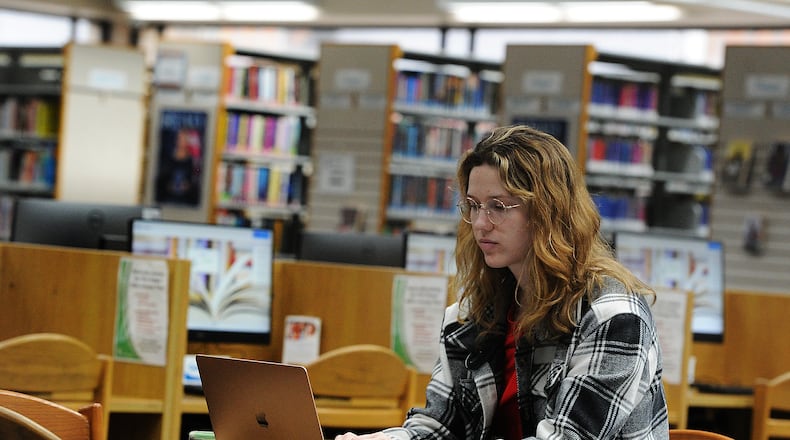“You’re going to have a small-group conversation with the people who are helping decide where broadband expansion money is going. It would be a missed opportunity to not have your voice heard,” said Kristina Scott, public policy and advocacy director of United Way of Greater Cincinnati, which is leading the organizational effort from Southwest Ohio.
The Xenia event is the only BroadbandOhio event happening in southwest Ohio, which accounts for 16 counties and includes the Cincinnati area.
Several Dayton-area organizations are working to both present the region’s case to state and federal authorities, and to help others use those tools that are increasingly becoming part of the modern world.
“Moving things online is here to stay,” Scott said. “Banks are trying to become more efficient, closing branches and asking people to do their banking online. Telehealth is now a part of how we do business. Everyone expects that you can apply for a job online. And there’s money to do it.”
Broadband internet has a minimum 25 megabits per second download speed, and 3 Mbps upload speed, and is faster and more reliable than dial-up internet.
National attention has been placed on broadband in recent years, as both the COVID-19 pandemic and the increased digitization of healthcare, business, education, and other sectors has left communities without high speed internet lacking.
Broadband provides high-speed internet access via multiple technologies, including fiber optics, wireless, cable, DSL and satellite. The federal government has dedicated billions to make sure rural and low-income communities — and other places internet service providers wouldn’t otherwise go because they don’t generate a return on investment — are able to access, and afford, that technology.
The federal government has developed a two-prong approach to closing the so-called “digital divide,” according to Broadband Ohio, the state agency spearheading the push.
The Broadband Equity, Access, and Deployment (BEAD) Program has set aside $42.5 billion nationwide to implement this technology, and the Digital Equity Act has $2.75 billion to ensure communities, and people, have the skills necessary to use the technology.
The listening session hosted by BroadbandOhio is part of a broader effort in collaboration with so-called Regional Digital Inclusion Alliances to collect input from Ohioans as BroadbandOhio plans for upcoming funding opportunities to “close the digital divide,” the agency said in an announcement.
For more information on virtual listening sessions, visit Broadband Ohio’s website at broadband.ohio.gov.
About the Author

